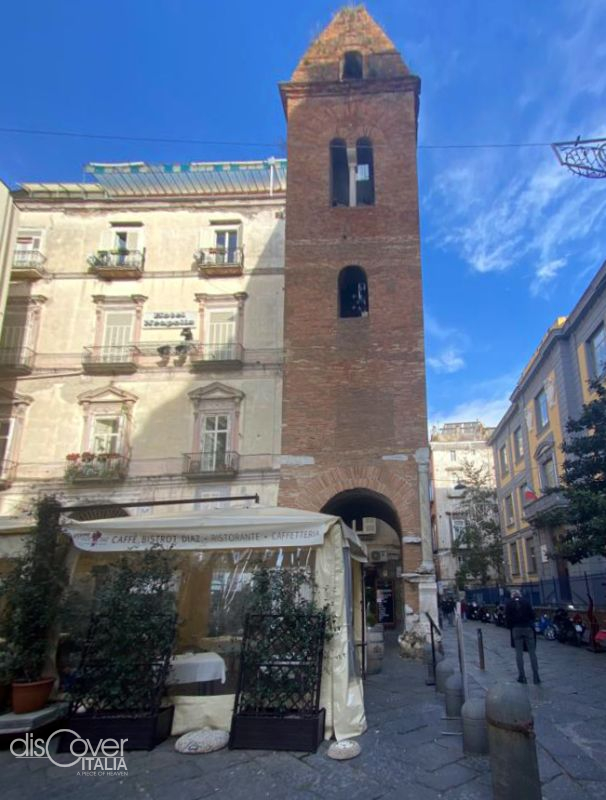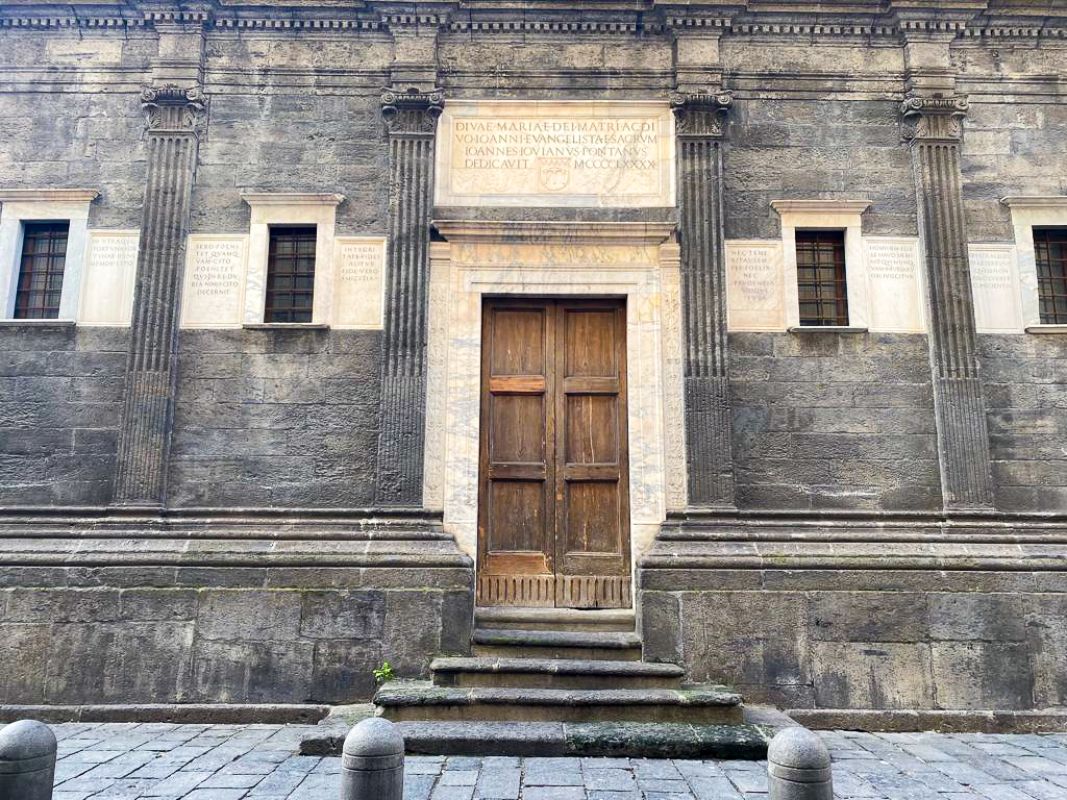 Pomponius learned of the terror that was spreading among the inhabitants of the area time before. Many claimed to hear terrifying grunts resounding in the alleys as soon as darkness fell, they were so scared that they no longer had the courage to leave their houses, keeping their doors tightly closed. Because the beast was associated with an evil presence, trying to sneak among them. Wasn't in that same area, on the other hand, that witches, dianare, janare in the language of the people, dedicated to the cult of Diana had been unmasked? Right there indeed, in Miraglia Square, once stood the temple of the goddess, of which only the ruins remained.
Pomponius learned of the terror that was spreading among the inhabitants of the area time before. Many claimed to hear terrifying grunts resounding in the alleys as soon as darkness fell, they were so scared that they no longer had the courage to leave their houses, keeping their doors tightly closed. Because the beast was associated with an evil presence, trying to sneak among them. Wasn't in that same area, on the other hand, that witches, dianare, janare in the language of the people, dedicated to the cult of Diana had been unmasked? Right there indeed, in Miraglia Square, once stood the temple of the goddess, of which only the ruins remained.
And on those very ruins the bishop Pomponio built the first sanctuary dedicated to the Madonna in Naples, the Basilica of S. Mary Major. It was 533 and the church soon became a destination for the faithful from all over the city. No one had heard the pig's grunts anymore and many now came to obtain indulgence in front of the so called Holy Stone with an engraved cross. According to tradition, it was on it that Pomponius had found the blue cloth from the dream.
Eleven centuries later, the Basilica along the Major Decumano suffered enormous damage from an earthquake in 1656. But it didn’t take long for it to be rebuilt. The great Cosimo Fanzago designed the new building. The works were completed in 1678.
A staircase leads to the entrance of the Baroque building, with an imposing facade characterized by an order of pilasters surmounted by Ionic capitals, while the pilasters of the upper order have lost the Corinthian capitals, destroyed with the original pediment by the bombings of the Second World War that caused enormous damage.
The Greek cross interior was completely restored in the 1970. But there is no longer any trace of the original paintings and furnishings, except for the sculptures by Matteo Bottiglieri. Remained splendid the majolica floor from the 18th century signed by the tile setters Giuseppe and Donato Massa, known for being the architects of the famous cloister of the church of St. Chiara,
The building, after a long closing period, was reopened to the public functioning as auditorium and exhibition space, the Lapis Museum, where exhibitions, in particular of contemporary art are hosted.
The hypogean suggestions of the Basilica
La Basilica restaurata e recuperata alla fruizione culturale rappresenta solo una parte dello stupefacente patrimonio custodito nel ventre di piazzetta Pietrasanta. Al di sotto dell’antico edificio sacro, si estende la cripta, che corrisponde al livello di una domus romana di cui sono evidenti alcuni tratti di muri in opus reticulatum
The Basilica, restored and brought back to its cultural use, represents only a part of the amazing heritage kept in the womb of Pietrasanta Square. The crypt extends beneath the ancient sacred building, corresponding to the level of a Roman domus of which some sections of walls in opus reticulatum are evident.
Deeper, in the second of the underground levels, is the kingdom of water. There the Greeks were the first to build large cisterns to collect rainwater, also used in Roman times, when they were integrated into the city aqueduct. Those large underground areas during the last world war were used as air-raid shelters.
The ancient cisterns now restored and the connected network of tunnels are part of an underground itinerary full of suggestions and prodigal of beauty, unraveling among the Cistern of the Pozzari, the Pool of the Prince, the Room of the Lamps and the Archive of Tuff.
The Bell tower

Walking along via Tribunali, there is one of the most particular and interesting ancient monuments in the historic center. At first glance, one gets the impression that it is a tower, while in reality it’s the bell tower of the Basilica, which has maintained, unlike the surrounding buildings, its original Romanesque imprint in which evident Byzantine influences can be spotted.
With a square plan, the high structure that rises on four levels towering over the neighboring buildings, has been dated by recent studies between the 9th and 10th centuries. The tower, built with bricks inside the open space at the bottom, allowing the passage in ancient times when the road level was still to be raised, is enriched precisely in that visible part by bare marble decorative elements, coming from the ancient Roman temple . Among all, the heads of a griffin stand out, the mythical animal half lion and half eagle, a symbol of the conflict between human nature and divine nature.
The Pontano Chapel at Arcum
In the year that marked the passage to a new era, 1492, Giovanni Gioviano Pontano was finally able to pay a worthy homage to his beloved wife, Adriana Sassone, who died two years earlier. For her, he had designed a funeral monument which would forever remember her earthly presence, between the Decumano Major and the small via del Sole, with a facade overlooking Pietrasanta Square. Right next to Vulcano Palace (now Spinelli Palace), a gift from King Ferdinand of Aragon for his faithful services, where he lived happy moments with his wife and children.
The famous humanist of the Aragonese court had used the best workers to realize the idea. Based on a project attributed to Francesco di Giorgio Martini or, perhaps, to don Giovanni Giocondo, meaning the best that Naples offered at that time.
On the main front, characterized by piperno cladding and pilasters with composite capitals, he wanted to put his signature, the Pontano, expressing his philosophical thought on twelve tombstones with Latin inscriptions. And on the entrance door he wanted the coats of arms of his and her wife ’s families to appear together.

Greek and Latin epitaphs composed by him on the great themes of life were also installed inside, in the only room with a rectangular plan, covered by a barrel vault and with a precious floor of majolica tiles, decorated with coats of arms, portraits and inscriptions. In that family mausoleum were later buried his children Lucio, Francesco and Lucia Marzia and also their friends Pietro Golino and Pietro Compare. And he too, in 1503.
In 1759, shortly before leaving Naples for Spain, Charles of Bourbon had the Pontano Chapel carefully restored. Where, three centuries after the inauguration, in 1792 a precious painting was placed depicting S. Mary with Child and Saints John the Baptist and John the Evangelist, attributed to Francesco Cicino from Caiazzo.
The Savior chapel
To complete the monumental complex of Pietrasanta, socketed between the Basilica and the Pontano Chapel, stands the S. Savior Chapel, which dates back to 1150. In the 18th century it underwent, like almost every church in Naples, a complete renovation in line with the prevailing style of the era. Thus a magnificent majolica floor and precious polychrome marbles were installed, embellishing the high altar too.



Comments powered by CComment